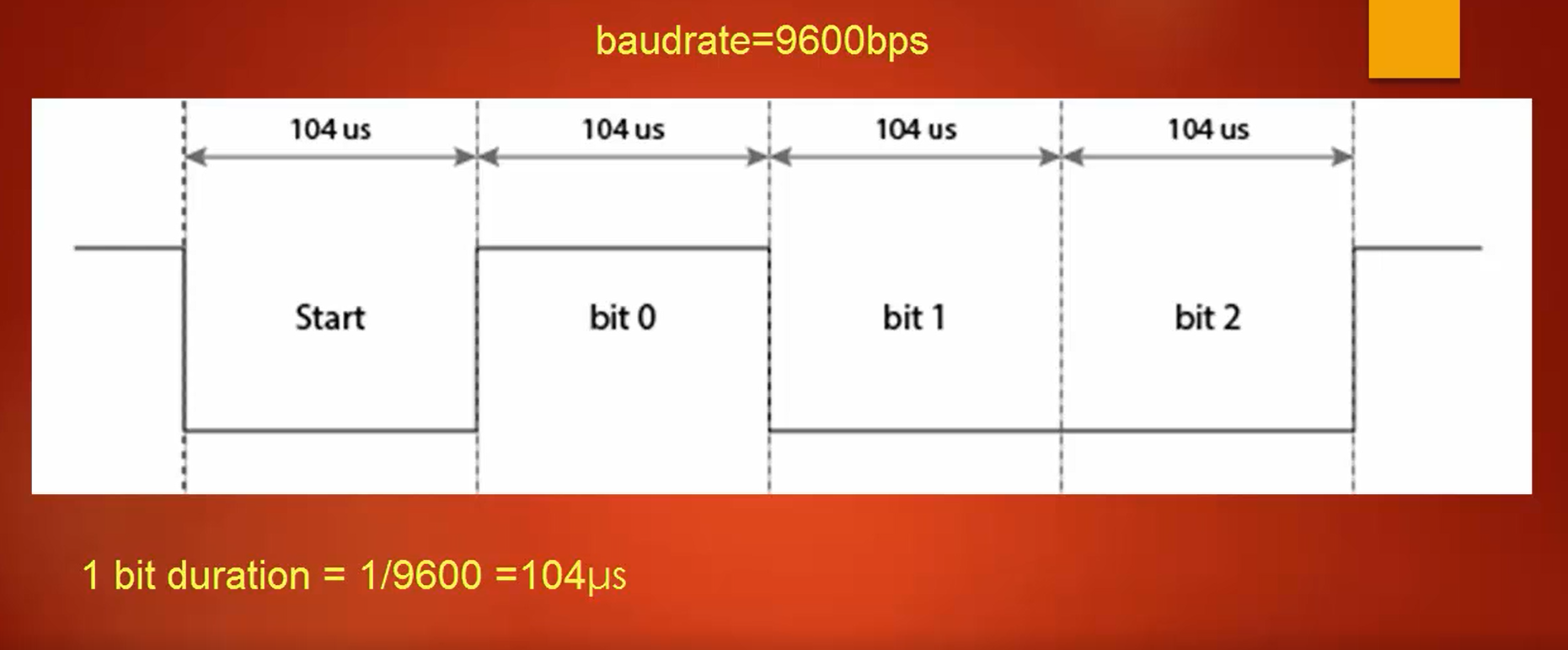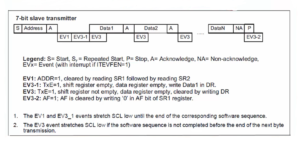Baud Rate
Understanding Baud Rate in Serial Communication
The significance of the baud rate is how fast the data is sent over a serial line. It’s usually expressed in units of bits-per-second (bps). If you invert the baud rate, you can find out how long it takes to transmit a single bit. This value determines how long the transmitter holds a serial line in either a high or low state.
Example
Look at the diagram in Figure 1. In that, the baud rate is 9600bps.

In this scenario, the baud rate is set at 9600 bps, signifying that:
1 bit duration = 1/9600 = 104 microseconds.
Therefore, each bit, including the start bit, occupies a duration of 104 microseconds. In this case, to transmit four bit data segment, 416 microseconds are needed. When you increase the baud rate, obviously, the area shown in Figure 2 becomes smaller and smaller, which means your data gets transmitted very quickly.

Baud rates can be just about any value. The only requirement is that both transmitting as well as receiving devices should operate at the same rate. One of the common baud rates, especially for the simple stuff where speed isn’t critical, is 9600bps, and the baud rates shown in Figure 3 are some of the standard baud rates typically used.

The higher a baud rate goes, the faster the data is sent or received. But there are limits to how fast the data can be transferred. The baud rates are usually depending upon the peripheral clock frequency of the UART peripheral. In today’s modern microcontroller, you can be able to reach a baud rate of a few megabits per second.
In the next article, let’s see Synchronization bits.
FastBit Embedded Brain Academy Courses
Click here: https://fastbitlab.com/course1



